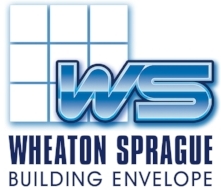Project Management: Keys to Clarifying a Critical Role- John Wheaton
/ This article previously appeared on Glass Magazine’s website here
Project management is many things. The term project management is a broad category. It can be defined and manifested in many ways. There are key aspects and processes to the role of project management that need to be executed in order to achieve success. Project management in one company differs from that of another, yet there should be some common ground, some similarities, across all of project management in the AEC industry.
All companies bigger than the ability or availability of an individual owner, or group of owners, to manage at the project level, are dependent on project management to determine the success of their projects, their profits, quality, and ultimately, the success of failure of their client relationships. That’s right; everything intersects at the project manager level and in the project operational domain. The success of project management determines the future growth, size, scalability, and health of the organization.
Project managers are the gatekeepers of each company’s clients, values, projects, profits and quality. This should produce a sober reality on making clear their roles and responsibilities. This is easy to say, and difficult to do.
Project management involves both quantitative and qualitative skills and attributes. This includes “hard” skills and “soft” skills. The things we are trained for in school, the operational tools we learn to support project management tasks like scheduling, budgeting, accounting systems, CRM platforms, and more, ultimately do not determine successful project management. Tools help support and define the work. But the success of project management, is produced from a proper mindset, knowledge of the work, a solution orientation, solid discipline and accountability, and the tools to support.
Here's a high-level view of some key aspects to project management. This is not an exhaustive list, but a few basic areas of impact.
COMMUNICATION
This is one differentiator. Clear, concise, timely, polite, professional, appropriate communication. The means of communication is contextual to the need or client preference; email, phone, letters, instant messaging, texting, DM’s, WebEx, Skype, face-to-face, and other. All forms; and it must be timely; concurrent; “real time”. Tools and platforms used in our companies should support communication in the best manner possible.
SCOPE AND CONTRACT MANAGEMENT
We’ve got to remember the project scope and make sure to benchmark to it. Knowing when to shift and when to draw the line on scope creep is key to maintaining profitability while building a strong client relationship. Trust is the key. Build trust.
DOCUMENT MANAGEMENT
Keeping track of documents, timing, logging documents, updating our teams, etc.; this includes things like ASI’s, CSK’s, bulletins, addendums, BIM updates, owner changes, and on and on.
EARNED VALUE TRACKING (EVT)
EVT is about measuring the real progress of our work as it relates to the budget. The goal of EVT is to estimate as accurately as possible, the percent complete on the project—the spent amount—vs. the budget we must work with.
SCHEDULE MANAGEMENT, MILESTONES, SUBMITTALS
If we don’t establish a schedule, we won’t succeed. The schedule typically drives everything. Creating benchmarks and milestones along the way, allows us to stay on track. Schedules never appear to be realistic in the delegated design space by the time the project gets released, but we must start somewhere. I’ve yet to see a single schedule maintained exactly, except perhaps the “turnkey” moment when the owner is handed the keys to open and occupy the building.
MEETINGS
Project meetings, design-review meetings, huddles, post-project review meetings and kick-off meetings all serve to create collaboration. We must share in each other’s reality—ours and our client’s—to drive awareness, stay aligned, and maintain milestones. We’ve got to be aware of business and people dynamics and manage them, business to business and human to human items and H2H items.
As we approach the end of the year, we should all ask ourselves how we can improve project management in 2020 and beyond.
P.S.: I was in Nashville Nov. 8, 9 and 10. Book your trip to the BEC as soon as you can. It’s going to be EPIC. Bring the energy.

